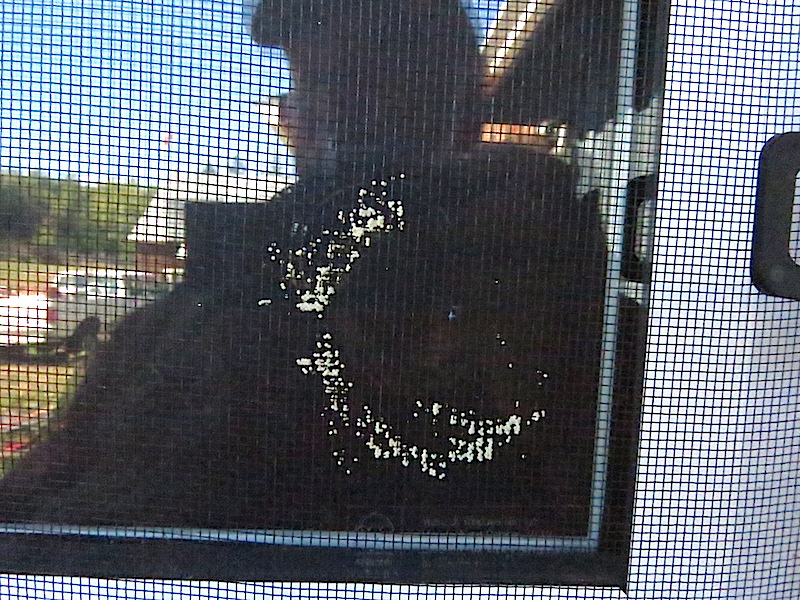Cortes Island Museum (CIMAS) director Lynne Jordan noticed some mysterious “stuff” on the fly-screens of a few of the Museum’s windows in early September of 2015. A number of Wasps seemed to show an interest, and Lynne was wondering whether they might be feeding on the “stuff”.
Even though there has been a surfeit of Wasp stories recently, the author received a request for just one more bit of Wasp-sleuthing and -lore …..
The “stuff” turned out to consist of small, half-millimetre beads, shiny white to pale beige, typically attached to the screens in a rough semi-circle.
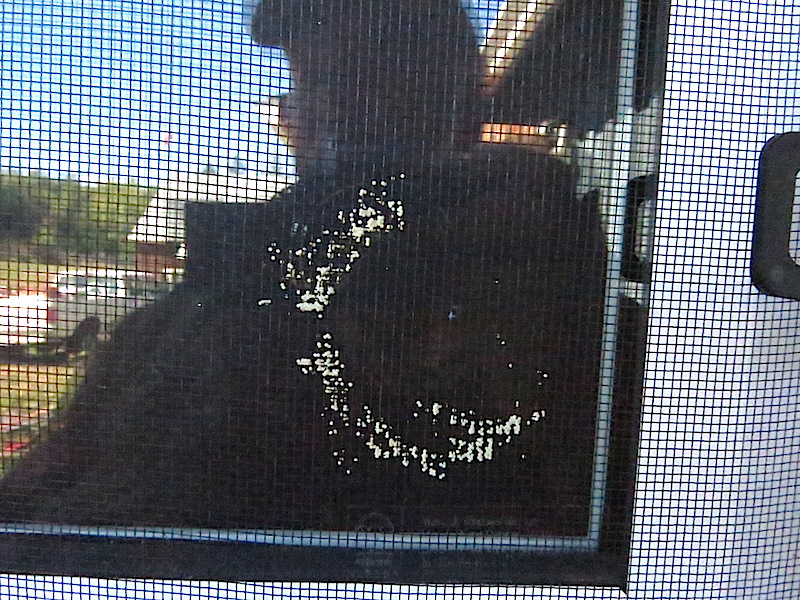
The little beads turn out to be Moth eggs: the semi-circle arrangement can be explained by the way the Moths move when depositing their eggs: picture the Moth’s head at the centre of the circle, with abdomen slowly rotating along the circumference through about 180º.
Under magnification, the little beads show the surface texture typical of Moth eggs.
Comparison with a number of images available on the Internet makes it likely that the eggs were laid by one of the Cutworm Moths (Noctua sp.). The so-called Cut ”worm” is the larval stage (caterpillar) of this Moth, and many a gardener has made the unhappy acquaintance with this serious garden pest.
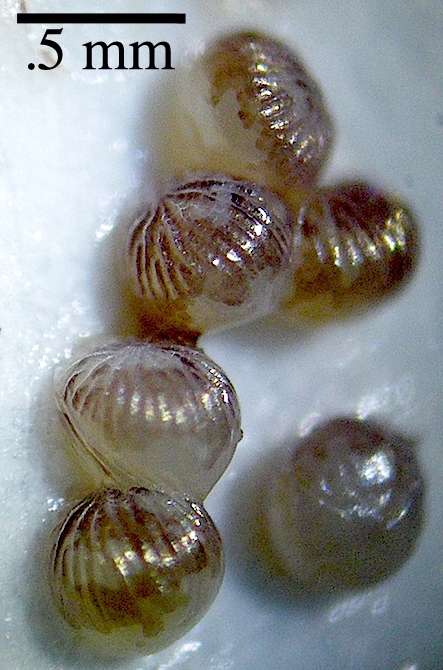
Closer inspection of the eggs in the Museum fly-screens revealed that Lynne’s first notion is likely correct: some of the eggs have been eaten.

In an earlier blog, the virtues of the European Paper Wasp Polistes dominula were mentioned. It just so happens that the eaves of the Museum building are adorned with several active nests, and it is most likely this species that Lynne observed attacking the eggs.
It was also suggested that European Paper Wasps discourage the presence of other Wasp species. There is evidence for this under the eaves as well: an abandoned Hornets nest can be seen next to two active Paper Wasp nests.
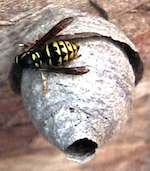
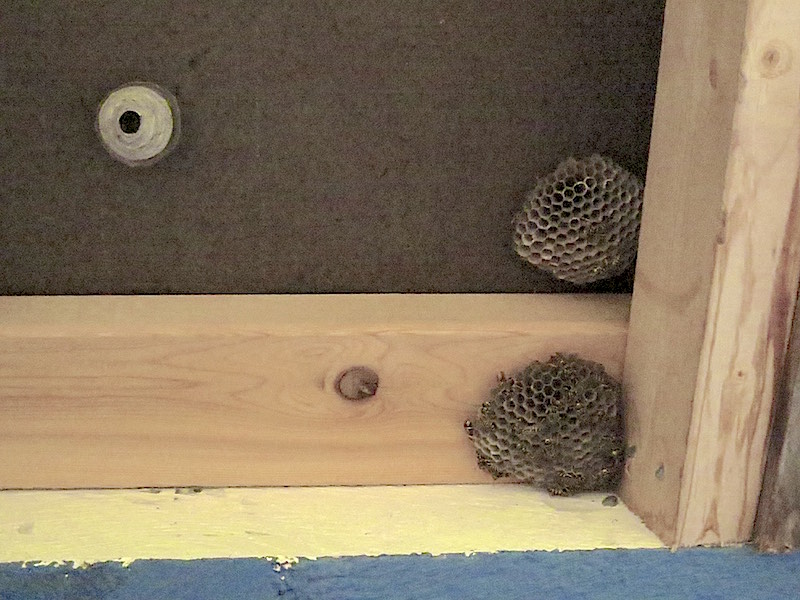
The observations at the Museum all support the notion that the European Paper Wasps are an efficient natural pest control. Despite their exotic origin and invasive nature, the species has been endorsed as a beneficial insect in several jurisdictions. The fact that their presence also seems to have discouraged the full development of a Hornets nest, who are an indigenous species and themselves have to be considered beneficial, because of their habits of feeding on a variety of garden pests, ought to inspire second thoughts: common wisdom regarding biodiversity condemns the displacement of indigenous species by exotic ones.
The number of observations remains too low to be of statistical significance, but even “anecdotal” evidence should not be dismissed out of hand: it very well might be pointing in the right direction, as far as further investigations are concerned.
(All photographs by Christian Gronau)

